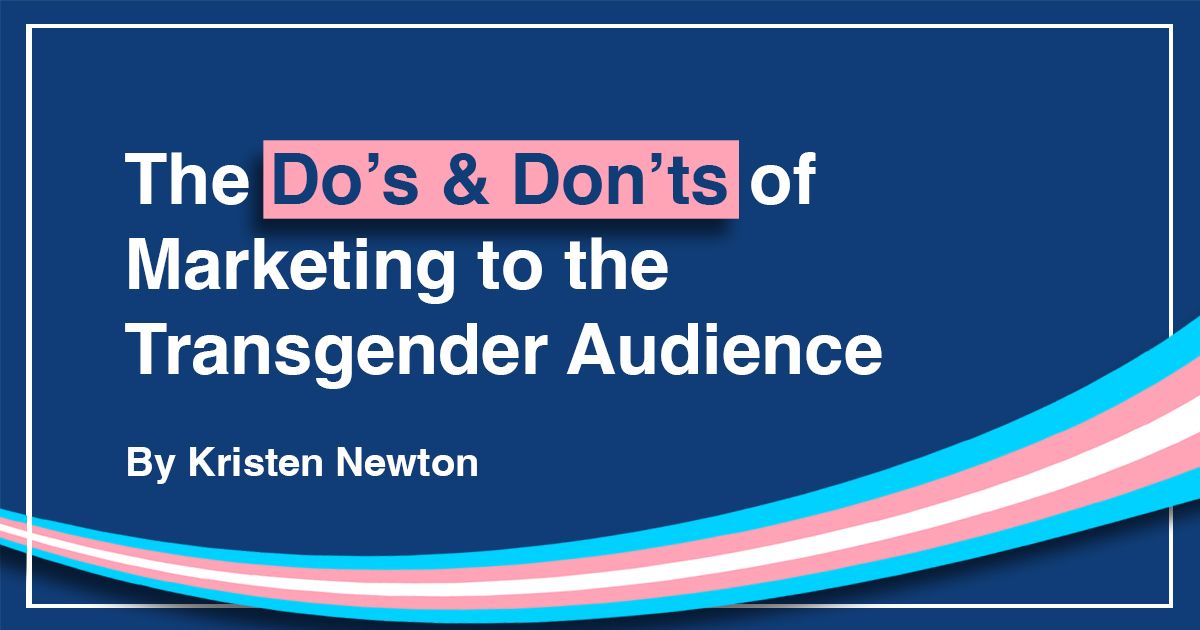Did you know that approximately 1 million people in the United States identify as transgender? “Approximately” is an important qualifier: the population size of transgender people is not well known, at least in part because the U.S. Census does not include data on gender identity.
There’s no doubt that transgender people have traditionally been an under-represented and under-recognized group. However, consider that the average Facebook user has 338 friends and that about 1 in every 250 people in this country identifies as transgender. That means that you probably have at least one transgender person in your social circle.
I’m a professional communicator and the parent of a transgender teen. For these reasons, I can’t help but notice the lack of transgender representation in marketing. Yes, representation has increased over the years, especially in the last decade. But we as marketers have more progress to make when it comes to accurately and authentically portraying transgender people in marketing and advertising.
How can we be sensitive, respectful, and inclusive when it comes to marketing to the transgender audience? Here are some best practices:
- Acknowledge the power of representation. Including transgender people in marketing materials helps to build a more inclusive marketplace—and reflects a more inclusive and ethical advertising industry. In your outreach, show transgender people as everyday people in everyday situations.
- Don’t generalize. Transgender people cover a variety of identities, such as male-to-female, female-to-male, drag queens, drag kings, transsexuals, cross-dressers, non-binary, gender-neutral, gender-fluid, gender-queer, and androgynous. Avoid stereotypes that force this community into a single, monolithic group.
- Use humor—sensitively. Humor is fine, but don’t use transgender people as the punchline. Break out of common tropes—like the heterosexual man in bad drag—that portray transgender people the butt of a joke. Instead, a theme of “acceptance with a twist” will work to counter worn-out cliches and lower the barriers to acceptance.
- Embrace ambiguity. When marketing to transgender people, the traditional borders of relationships and how people “should” look or act may become blurry or fall away completely. You can’t go wrong by erring on the side of inclusivity. Use inclusive pronouns (such as they/them) in copy, don’t clearly define relationships between people in images, and pay attention to wardrobe and makeup preferences when hiring talent for photoshoots and video.
The LGBTQIA+ audience represents more than $1 trillion in spending power—and brands like Chanel, e.l.f. beauty, and Clean & Clear are recognizing this power by including transgender people in their advertising and marketing. By considering the transgender audience, we can not only tap into this market, we can help create a more inclusive and accepting world.
Want to learn more about how you can market to diverse audiences? LMD can help.

